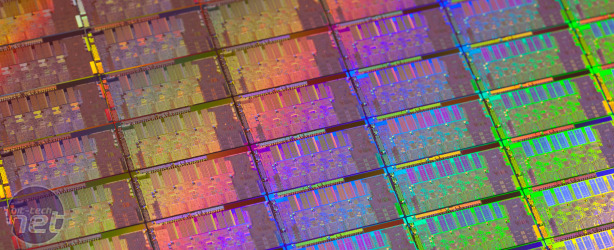Intel Core i5-2500K Review
Manufacturer: IntelUK price (as reviewed): TBC
US price (as reviewed): $216 (ex tax)
Only P67 motherboards allow CPU overclocking at the moment, so we used the Asus P8P67 (review coming soon) for our testing. We’ll start with the Core i5-2500K, as this is sure to be the most popular choice with bit-tech readers, before moving onto the Hyper-Threaded Core i7-2600K, and the multiplier-locked and cheaper Core i5-2400.
The Core i5-2500K amazed us with its stock-speed performance – it even beat the epic £750 Intel Core i7-980X Extreme Edition in the image editing and multi-threaded video encoding tests. Only the higher multi-tasking score of the i7-980X prevented the i5-2500K from being faster overall than the mighty 6-core super-CPU in everyday applications.
It was only when we switched to the heavily multi-threaded Cinebench R11.5 that the i7-980X really shone, with a huge stock-speed score of 8.95 compared to the modest 5.47 of the i5-2500K. AMD’s new 6-core Phenom II X6 1100T Black Edition managed a higher score at stock speeds, thanks to its extra pair of cores, but we should remember that the i5-2500K is cheaper than both these 6-core leviathans (massively so in the case of the i7-980X).
The i7-980X held its own against the new mid-range CPU in our gaming tests, managing to crank out an extra 1fps from Crysis when both CPUs were at stock speed. However, the much cheaper i5-2500K ran X3: Terran Conflict 8-11fps faster than the i7-980X, which was previously the fastest CPU for this game before the new range was launched.
You’ll notice that we haven’t compared the i5-2500K with anything but the fastest CPUs that Intel and AMD have previously released – it walks all over everything else, as you can see from the performance graphs.
In the power consumption stakes, the i5-2500K proved to be highly energy-efficient, with the PC drawing only 76W from the wall when idle and 148W under load. Those figures compare favourably to cheap, low-end hardware; naturally, the X6 1100T and i7-980X draw more power from the wall by an exponential amount. The power to performance efficiency of the i5-2500K is staggering.
We overclocked the i5-2500K by first setting the Load-Line Calibration of the Asus P8P67 to Extreme. We then set the Base Clock to 104.7MHz and the CPU multiplier to 47x for an overall frequency of 4.92GHz. To make this stable, we set the CPU voltage to 1.35V, the CPU PLL to 1.9V, the VCCSA to 1.1V and the VCCIO to 1.106V. See How to Overclock an LGA1155 CPU for more details on how we overclocked all the CPUs.
The boost from a nominal 3.3GHz to 4.9GHz resulted in phenomenal performance: the overall Media Benchmarks score jumped from 1,889 to 2,687, making the Sandy Bridge system slightly faster than an X58-based PC with a 4.4GHz i7-980X at its heart. We saw incredible performance gains in every application, with the i7-980X only making a case for itself in Cinebench where its six Hyper-Threaded cores overclocked to 4.4GHz managed a score of 11.22.
Conclusion
The Sandy Bridge lineup gives us some of the easiest conclusions to write that we've ever come across: the new range of Intel CPUs renders almost every other processor redundant and pointless. Only if you need incredible performance in multi-threaded applications should you look beyond the Core i5-2500K for your next CPU.- Performance
- x
- x
- x
- x
- x
- x
- x
- x
- x
- -
- 9/10
- Features
- x
- x
- x
- x
- x
- x
- x
- x
- x
- -
- 9/10
- Value
- x
- x
- x
- x
- x
- x
- x
- x
- x
- x
- 10/10
- Overall
- x
- x
- x
- x
- x
- x
- x
- x
- x
- -
- 9/10

Intel Core i5-2500K
Specifications
- Frequency: 3.3GHz
- Core: Sandy Bridge
- Manufacturing process: 32nm
- Number of cores: 4 x physical
- Cache: L1: 64KB + 64KB (each core), L2: 512 KB (each core), L3: 6MB (shared)
- Memory controller: Dual-channel DDR3, 1,333MHz
- GPU: HD 3000
- Packaging: LGA1155
- Thermal Design Power (TDP): 95W
- Features: SSE, SSE2, SSE3, SSSE3, SSE4, SSE4.2, EM64T, EIST, Execute Disable Bit, VT, AES-NI, Turbo Boost 2.0, AVX, Quick Sync Video

MSI MPG Velox 100R Chassis Review
October 14 2021 | 15:04










Want to comment? Please log in.